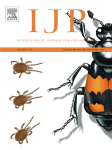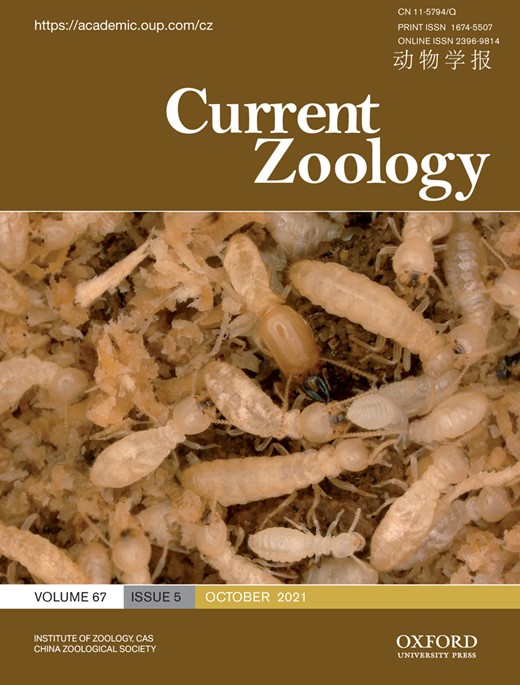Preprints – Artikel mit Peer-Review – Sonstige Veröffentlichungen
Preprints
Bey, M., Alex, N., Maczkowicz,L, Nehring, V. (2025) Exposure to non-nestmate odours changes the odorant receptor profile in Acromyrmex echinatior ants. bioRxiv doi: https://doi.org/10.1101/2025.08.17.668880
Majoe, M., Stolarek, N., Vizueta, J., Xiong, Z., Schrader, L., Boomsma, J.J., Foitzik, S., Libbrecht, R., Nehring, V. (2024) Queen loss fails to elicit physiological and transcriptional responses in workers of the invasive garden ant Lasius neglectus bioRxiv 2024.01.26.577224; doi: https://doi.org/10.1101/2024.01.26.577224
Artikel mit Peer-Review
Bey, M., Endermann, R., Raudies, C., Steinle, J., Nehring, V. (in press): Associative learning of non- nestmate cues improves enemy recognition in ants. Curr. Biol. 35: 407-412 (bioRxiv preprint doi: https://doi.org/10.1101/2023.12.19.572127) (Pressemitteilung)
Canitz, J., Sikes, D.S., Knee, W., Baumann, J., Haftaro, P., Steinmetz, N., Nave, M., Eggert, A.-K., Hwang, W., Nehring, V. (2022) Cryptic diversity within the Poecilochirus carabi mite species complex phoretic on Nicrophorus burying beetles: phylogeny, biogeography, and host specificity. . Mol. Ecol. 31: 658-674. doi:10.1111/mec.16248 (bioRxiv preprint: doi: https://doi.org/10.1101/2021.05.20.443311)
Wissink, M., Nehring, V. (2021) Appetitive olfactory learning suffers in ants when octopamine or dopamine receptors are blocked. J. Exp. Biol. 224 https://doi.org/10.1242/jeb.242732 (preprint https://doi.org/10.1101/2021.04.19.438615)
Majoe, M., Liebbrecht, R., Foitzik, S., Nehring, V. (2021) Queen loss increases worker survival in leaf-cutting ants under paraquat-induced oxidative stress. Philos. Trans. Roy. Soc. B. 376 doi: 10.1098/rstb.2019.0735
Kramer B., Nehring V., Buttstedt A., Heinze J., Korb J., Libbrecht R., Meusemann K., Paxton R.J., Séguret A., Schaub F., Bernadou A. (2021) Oxidative stress and senescence in social insects – a significant but inconsistent link? Philos. Trans. Roy. Soc. B.. 376 doi: 10.1098/rstb.2019.0732
Korb J., Meusemann K., Aumer D., Bernadou A., Elsner D., Feldmeyer B., Foitzik S, Heinze J, Libbrecht R, Lin S, Majoe M, Monroy Kuhn JM, Nehring V., Negroni M.A., Paxton R.J., Séguret A.C., Stoldt M., Flatt T. & the So-Long consortium (2021) Comparative transcriptomic analysis of the mechanisms underpinning ageing and fecundity in social insects. Philos. Trans. Roy. Soc. B. 376 doi: 10.1098/rstb.2019.0728
Bohn H, Nehring V, Rodríguez JG, Klass K-D (2021) Revision of the genus Attaphila (Blattodea: Blaberoidea), myrmecophiles living in the mushroom gardens of leaf-cutting ants. Arthropod Systematics & Phylogeny 79: 205–280. doi: 10.3897/asp.79.67569
Schedwill, P., Paschkewitz, S., Teubner, H., Steinmetz, N., Nehring, V. (2020) From the host’s point of view: Effects of variation in burying beetle brood care and brood size on the interaction with parasitic mites. Plos ONE 15: e0228047. doi 10.1371/journal.pone.0228047

Nehring, V., Teubner, H., König, S. (2019) Dose-independent virulence in phoretic mites that parasitize burying beetles. Int. J. Parasitol. 49: 759-767. doi: 10.1016/j.ijpara.2019.05.011
Schedwill, P., Geiler, A.M., Nehring, V. (2018) Rapid adaptation in phoretic mite development time. Sci. Rep. 16460.
Nehring, V., Dijkstra, M.B., Sumner, S., Hughes, W.O.H., Boomsma, J.J. (2018) Reconstructing the relatedness of cooperatively breeding queens in the Panamanian leaf-cutting ant Acromyrmex echinatior (Hymenoptera: Formicidae). Myrmecol. News. 27:33-45 (link | accompanying blog post).
Nehring, V., Steiger, S. (2018) Sociality and communicative complexity: insights from the other insect societies. Curr. Opin. Insect Sci. 28: 19-25. doi:10.1016/j.cois.2018.04.002 (free pdf)
Nehring, V., Müller, J.K., Steinmetz, N. (2017) Phoretic Poecilochirus mites specialise on their burying beetle hosts. Ecol. Evol. 7:10743–10751. doi: 10.1002/ece3.3591
Nehring, V., Dani, F.R., Turillazzi, S., Bohn, H., Klass, K.-D., d’Ettorre, P. (2016) Chemical disguise of myrmecophilous cockroaches and its implications for understanding nestmate recognition mechanisms in leaf-cutting ants. BMC Ecol. 16: 35. doi: 10.1186/s12898-016-0089-5
de Verges, J., Nehring, V. (2016): A critical look at proximate causes of social insect senescence: damage accumulation or hyperfunction? Curr. Opin. Insect Sci. 16: 69–75. doi:10.1016/j.cois.2016.05.003 (free pdf)
Larsen, J., Nehring, V., d’Ettorre, P., Bos, N. (2016): Task specialization influences nestmate recognition ability in ants. Behav. Ecol. Sociobiol. doi:10.1007/s00265-016-2152-9
Leonhardt, S.D., Menzel, F., Nehring, V., Schmitt, T. (2016): Ecology and evolution of communication in social insects. Cell 164: 1277–1287. doi:10.1016/j.cell.2016.01.035
Nehring, V., Dani, F.R., Turillazzi, S.; Boomsma, J.J., d’Ettorre, P. (2015): Integration strategies of a leaf-cutting ant social parasite. Anim. Behav. 108: 55-65. doi:10.1016/j.anbehav.2015.07.009
Larsen, J., Fouks, B., Bos, N., d’Ettorre, P., Nehring, V. (2014): Variation in nestmate recognition ability among polymorphic leaf-cutting ant workers. J. Insect Physiol. 70, 59–66. doi:10.1016/j.jinsphys.2014.09.002
Nehring, V., Boomsma, J.J. & d’Ettorre, P. (2012): Wingless virgin queens assume helper roles in Acromyrmex leaf-cutting ants. Curr. Biol. 22: R671-R673. doi:10.1016/j.cub.2012.06.038 (press release)
Fouks, B., d’Ettorre, P. & Nehring, V. (2011): Brood adoption in the leaf-cutting ant Acromyrmex echinatior: Adaptation or recognition noise? Insect. Soc. 58: 479-485. doi: 10.1007/s00040-011-0167-9. (pdf)
Nehring, V., Evison, S.E.F., Santorelli, L.A., d’Ettorre, P. & Hughes, W.O.H. (2011): Kin-informative recognition cues in ants. Proc. R. Soc. Lond. B 278: 1942-1948. doi: 10.1098/rspb.2010.2295 (pdf | press release)
Nehring, V., Müller, J.K. (2009): Social environment affects the life history tactic of a phoretic mite. J. Evol. Biol. 22: 1616-1623. doi: 10.1111/j.1420-9101.2009.01771.x. (pdf)
Guerrieri, F. J., Nehring, V., Jørgensen, C. G., Nielsen, J., Galizia, C. G. & d’Ettorre, P. (2009): Ants recognize foes and not friends. Proc. R. Soc. Lond. B 276: 2461-2468. doi: 1.10.1098/rspb.2008.1860.
Sonstige Veröffentlichungen

Korb, J., and Nehring, V. (2025). Social living and life history evolution, with a focus on ageing and longevity. In Life History Evolution, M. Segoli and E. Wajnberg, eds. (John Wiley & Sons, Ltd).
Cini, A., Casacci, L.P., Nehring, V. (2021) Uncovering variation in social insect communication. Curr. Zool. 67: 515-518. https://doi.org/10.1093/cz/zoab065
Nehring, V. (2018) Queen pheromones under scrutiny: a comment on Holman 2018. Behav. Ecol., https://doi.org/10.1093/beheco/ary064
Nehring, V., Wyatt, T. D., & d’Ettorre, P. (2013): Noise in chemical communication. In H. Brumm (Ed.), Animal Communication and Noise (pp. 373–405). New York: Springer. doi:10.1007/978-3-642-41494-7_13
Nehring V. (2011): Kommunikation hos sociale insekter. Kaskelot 187: 8-11.